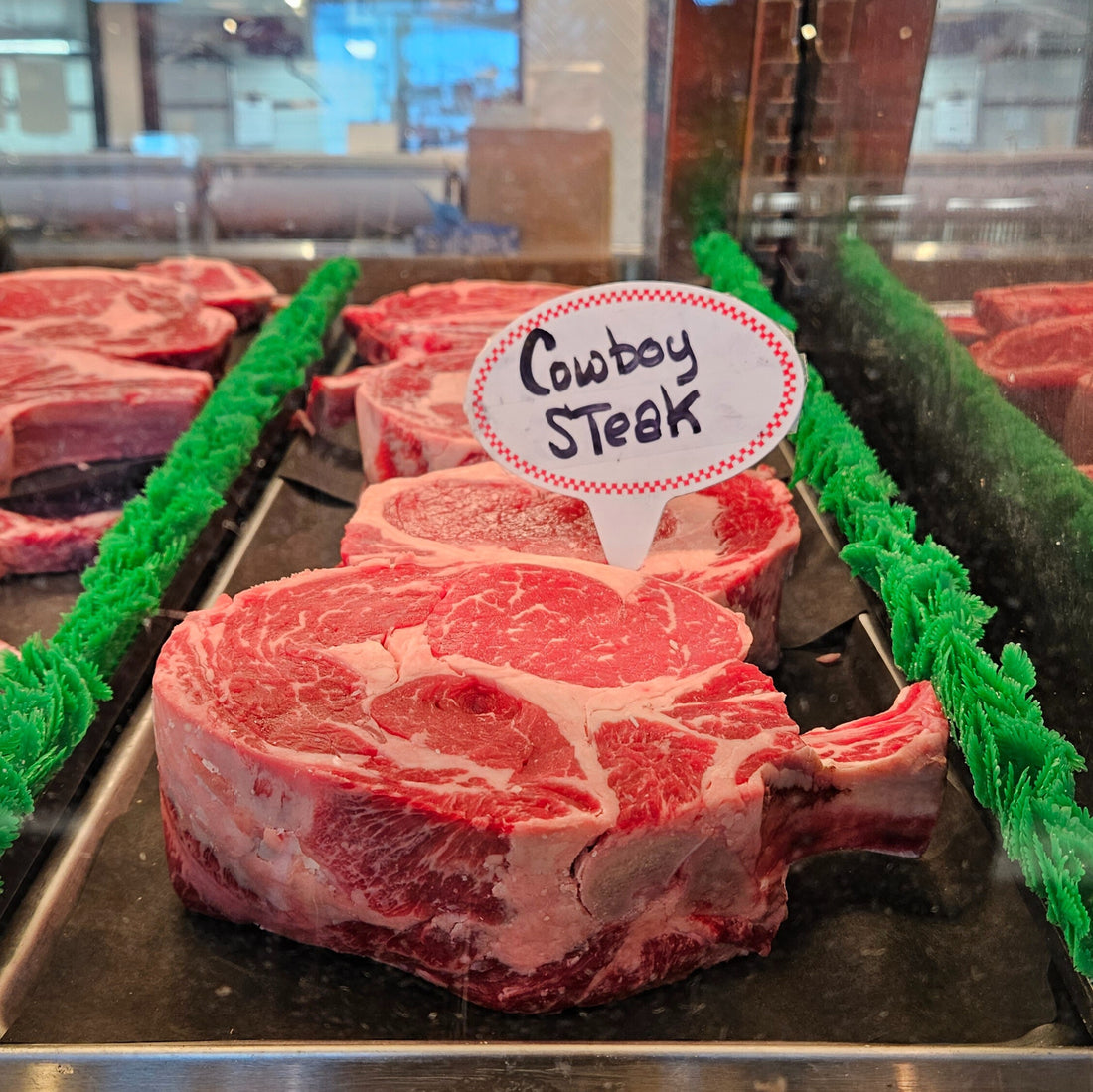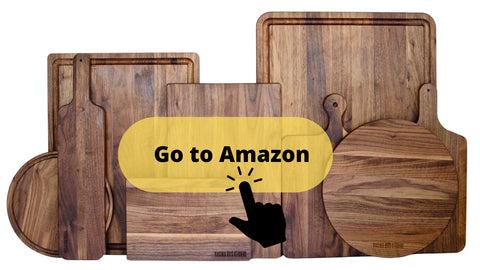Ready to cook a cowboy steak? This isn’t just any steak—it's the ribeye that the American frontier was built on. Gourmet steak grilling may sound tricky, but with this guide, you'll be handling it like a pro.
Imagine the sizzle of a thick steak over an open flame. With perfect marbling, the cowboy steak offers an unforgettable meal. So, grab your apron, sharpen those knives, and let's get started!
Introduction to Cowboy Steaks
Cowboy cooking is all about hearty, flavorful meals, and the cowboy steak is a prime example. This thick, bone-in ribeye cut is central to Western cuisine. But what makes it so special? Let's find out.
The cowboy steak has a rich history, dating back to cattle herders who needed substantial and delicious food. Known for its bold taste and generous marbling, it satisfies the hungriest appetites.
The art of cowboy cooking demands a cut that can handle high heat while staying juicy. Whether you're grilling in the city or the countryside, choosing the right beef cut is key to achieving that authentic flavor.
What Sets the Cowboy Steak Apart?

What makes the cowboy steak special? It's not just a meal; it's a piece of history on your plate. The cowboy steak, a bone-in ribeye, is cut from the rib section of the steer. The bone adds to its flavor and presentation. At about two inches thick, it's perfect for grilling. See a more comprehensive in-depth understanding of cow cuts and where they come from.
The Flavor Profile
The marbling in a cowboy steak melts during cooking, making the steak moist and flavorful. It's this marbling that sets the cowboy steak apart, offering a savory experience.
| Characteristic | Description | Grill Master's Notes |
|---|---|---|
| Bone-In | French-cut rib bone for flavor and presentation | Always cook bone-in for depth of taste and moisture. |
| Thickness | Approximately two inches of beef | Manage grill heat to cook evenly without charring. |
| Marbling | Generous fat marbling for premium ribeye | Allow steak to reach room temperature for even cooking. |
The Origins of Cowboy Cuisine
Cowboy cuisine emerged in the 19th century American West, born out of necessity. Cowboys cooked over open flames, using simple ingredients. This led to robust, flavorful dishes.
Selecting the Right Cut
To select the best cowboy steak, look for rich red color and ample marbling. Here are some grades to consider:
- USDA Prime: The best marbling and richest flavors.
- USDA Choice: Good marbling, widely available.
- USDA Select: Leaner and less expensive, but less juicy and flavorful.

When choosing a steak, look for a cut at least one inch thick. Ask your butcher about the beef's origin and age. Before cooking, let the steak reach room temperature and rest after grilling.
Marinades and Rubs
Creating a Marinade
A good marinade tenderizes the steak. Use Worcestershire sauce, minced garlic, herbs, and a splash of whiskey for an authentic touch.
The Art of Dry Rubs
Dry seasonings and rubs add flavor. Try smoked paprika, black pepper, brown sugar, and cayenne for a flavorful crust.
Mastering Cowboy Steak Cooking Techniques
Cooking Steps
- Room Temperature Rest: Let the steak sit at room temperature for 30 minutes before grilling.
- Searing: Heat the grill to a high temperature to sear the steak, locking in flavors.
- Cooking: Move the steak to lower heat and cook to your desired doneness.
- Resting: Let the steak rest after grilling to let the juices redistribute.
| Doneness | Internal Temperature | Touch Test |
|---|---|---|
| Rare | 120-130°F (49-54°C) | Soft and spongy with slight resistance |
| Medium Rare | 130-135°F (54-57°C) | Firm but still yields to the touch |
| Medium | 135-145°F (57-63°C) | Yields slightly, beginning to firm up |
| Medium Well | 145-155°F (63-68°C) | Firm to the touch |
| Well Done | 155°F (68°C) and up | Very firm, no give |
The Journey of a Cowboy Steak
Understanding the journey of your steak adds to the experience. Ethical and sustainable cattle raising, humane processing, expert butchering, and efficient distribution ensure high-quality beef.
| Stage | Description | Significance |
|---|---|---|
| Ranching | Ethical, sustainable practices | Influences flavor and texture |
| Processing | Stress-free handling | Ensures tenderness |
| Butchering | Expert cutting | Maximizes quality cuts |
| Distribution | Cold-chain compliant transit | Preserves freshness |
| Preparation | Your grilling, seasoning, and serving | The final step for a unique meal |
Ideal Pairings with Your Cowboy Steak
Smoky Beans and Rustic Potatoes
Smoky beans with bacon and spices, and rustic potatoes—roasted, mashed, or baked—are perfect sides.
Creative Salads and Veggies
Brightly dressed greens, caramelized carrots, or a corn salad add freshness and contrast.
- Garden Fresh Greens with a Tangy Vinaigrette
- Caramelized Baby Carrots with Maple Glaze
- Grilled Corn Salad with Lime and Cilantro
Cowboy Steak Across America
Different regions in the U.S. put their own twist on the cowboy steak.
| Region | Twist on the Classic Cowboy Steak | Key Ingredients |
|---|---|---|
| The Southwest | Tex-Mex Spiced Rub | Chili powder, cumin, smoked paprika |
| The South | Smoky Barbecue Glaze | Brown sugar, apple cider vinegar, smoke |
| The Pacific Northwest | Coffee-Infused Marinade | Ground coffee, brown sugar, garlic |
| New England | Maple Bourbon Sauce | Maple syrup, bourbon, stone-ground mustard |
| The Midwest | Buttery Garlic Herb Topping | Garlic, rosemary, thyme, butter |
Dining Out West: How Steakhouses Bring Cowboy Lore to the Table

PHOTO: encorebostonharbor.com
Western-themed steakhouses offer more than just a meal. They create an atmosphere of the Old West with rustic décor and authentic dishes. The cowboy steak is the star, bringing a taste of history to your table, although finding it on a restaurant menu might be a little tricky.
Due to its size (and therefore, cost), it's hard to find a steakhouse that would even have this on the menu - you might find porterhouse (similiar but thinner) or a cowgirl steak (a little smaller) such as a 16oz cowgirl steak at STK Steakhouse at Disney Springs, Florida..
I have only seen cowboy steaks on the menu of top-tier steak houses such as Rare Encore in Boston - you aren't going to find this at your typical Outback Steakhouse or Texas Roadhouse. Be ready to eat 24-36 ounces of steak if you dare to try one!
Conclusion: Embracing the Cowboy Steak Tradition
Grill a cowboy steak at home and bring a piece of the frontier to your backyard. With the right techniques and quality ingredients, you can recreate an authentic cowboy meal. Pair your steak with hearty sides and enjoy a meal that honors the past.
Frequently Asked Questions
-
What is a cowboy steak?
A thick, bone-in ribeye cut known for its size and hearty flavor. -
How do I select the best cowboy steak?
Look for rich red color and ample marbling. USDA Prime or Choice grades are best. -
What is cowboy cuisine?
Rustic, robust dishes from 19th-century cattle drives, using simple ingredients and campfire cooking. -
How do I make a good marinade?
Use Worcestershire sauce, garlic, herbs, and whiskey for an authentic touch. -
What are the cooking steps for a cowboy steak?
Let the steak rest at room temperature, sear on high heat, cook on lower heat, and rest before carving. -
What are the best sides for a cowboy steak?
Smoky beans, rustic potatoes, fresh salads, and veggies. -
How do different regions in America cook cowboy steak?
Each region adds its own twist, such as Tex-Mex rubs or smoky barbecue glazes. -
How can I bring the steakhouse experience home?
Use quality cuts, expert cooking techniques, and rustic sides to create a Western-themed meal.
See Virginia Boys Kitchens On Amazon
We are on Amazon, see our storefront here. Use coupon code VBKBLOG10 for 10% off your entire purchase of any Virginia Boys Kitchens on Amazon. Apply the code at checkout.



